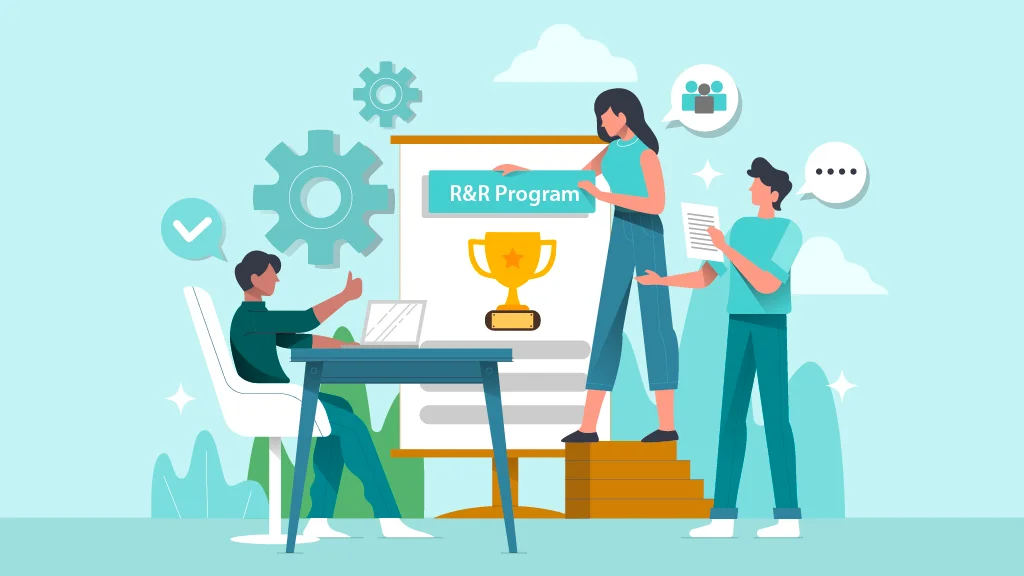5 Manager Barriers Killing Peer Recognition (And How AI Fixes Them)

Team AdvantageClub.ai
November 3, 2025

You’ve invested in a great recognition platform. You’ve explained its value. You’ve done everything right, but your peer-to-peer recognition challenges still make the program feel empty. Why?
The most significant hidden barrier to a strong recognition culture isn’t a lack of enthusiasm from the team. It’s what we call manager recognition barriers.
Why Managers Become the Bottleneck in Peer Recognition
The Six Manager Reluctance Barriers and Solutions
Barrier 1: The "If I Didn't See It, It Didn't Happen" Bias
The Solution: Data Visibility and Objective Quantification
- See the Invisible: Review a dashboard that clearly shows which employees are driving cross-functional success or providing key cultural support, complete with data from peer-driven recognition.
- Validate Peer Input: See quantitative evidence that peer recognition is tied to specific, measurable behaviors, increasing their trust and validation of the program.
- Identify Quiet Heroes: Look for employees who make a significant impact but don’t always speak up or work on high-visibility projects. These are the people who consistently receive regular appreciation from their teammates but often remain out of the manager’s sight.
Barrier 2: The "Zero-Sum Game" Mentality Regarding Resources
The Solution: Automate Budget Management and Equitable Distribution
- Peer Wallets: A manager receives a pre-allocated monthly or quarterly budget of points for peer recognition, completely separate from the manager’s discretionary funds.
- System Governance: The platform strictly manages this distribution, ensuring the funds are used democratically and continuously by the peers themselves.
Barrier 3: Inconsistent Recognition Cadence
The Solution: Intelligent Nudges and Prompt Systems
- Behavioral Monitoring: Tracking metrics like recognition frequency, team-to-team recognition ratios, and the time elapsed since a high contributor’s last recognition.
- Automated Nudges: If the system detects a drop in team recognition activity or flags an employee who hasn’t been recognized in a while, it sends an automated, specific “nudge” to team leads and peers.
- Pre-emptive Prompts: Before a team meeting, the platform can prompt the manager with a list of recent peer recognitions to highlight, ensuring the manager consistently accesses the system without relying on their memory.
Barrier 4: Unconscious Bias in Amplification
But this means others get left out. Quiet, remote, or behind-the-scenes team members might be doing great work but never get mentioned.
Over time, this makes recognition feel unfair and uneven, even though everyone is trying their best.
The Solution: Objective Equity Audit and Alert System
- Continuous Monitoring: The system monitors the flow of recognition across all demographic markers (e.g., department, location, team, tenure) provided in the HRIS data.
- Equity Score: It generates an “Equity Score” based on the distribution of fairness. If the system detects that a specific group is consistently under-recognized, over-recognized, or if the manager’s amplification of peer recognition is skewed, it sends automated, confidential alerts to the HR/People Operations team.
Barrier 5: Lack of Data-Driven Program Justification
The Solution: Impact Visualization and Metric Correlation
- Retention Correlation: Showing that teams with a recognition frequency above a certain threshold have higher employee retention rates.
- Engagement Score Link: Correlating high recognition areas with positive spikes in subsequent engagement survey results.
- Value Reinforcement: Creating reports that clearly show which organizational values are being” most reinforced by peer recognition, providing concrete data for cultural discussions.
Overcoming Friction with AI
- Ending the Dispute Cycle: AI-powered knowledge systems give team members instant, consistent answers to complex policy questions. This means managers aren’t stuck in endless loops of explaining the same rules over and over, freeing up time for more meaningful conversations and coaching moments.
- Giving People Control: AI analytics tools let employees run their own scenarios and see potential outcomes for themselves. Managers can step back from being the calculator-in-chief, no longer fielding constant “what if I do this?” questions or manually walking through complex formulas.
- Making Everything Visible: AI creates dashboards that show everyone where they stand in real-time—performance, progress, goals, the whole picture. Managers don’t have to play information gatekeeper anymore or spend hours pulling together reports when someone asks “how am I doing?”
- Taking the Guesswork Out of Fair: By letting AI handle calculations and recommendations through consistent, unbiased algorithms, you remove the uncomfortable gray areas. Managers don’t have to worry about accusations of playing favorites, and teams can trust the process because it’s transparent and the same for everyone.
- Freeing Up What Matters: AI takes care of the repetitive stuff—answering routine questions, crunching numbers, keeping workflows moving. Managers get to be actual leaders again, focusing on developing their people instead of drowning in administrative busy work. They oversee the process without being trapped by it.
Shifting the Power Dynamic
Want to make recognition easier for everyone on your team? Try AdvantageClub.ai, which will help you build a culture where appreciation is simple, fair, and happens every day.





